Search
- Page Path
-
- HOME
- Search
- Review Article
- Infection
- Four months of rifampicin monotherapy for latent tuberculosis infection in children
- Chi Eun Oh, Dick Menzies
- Clin Exp Pediatr. 2022;65(5):214-221. Published online October 29, 2021
-
· Recently, the importance of a short-term treatment regimen including rifamycin has been highlighted in the treatment of latent tuberculosis infection (LTBI).
· Four prospective or retrospective studies in children consistently reported that a 4-month daily rifampicin regimen (4R) had a higher completion rate than and comparable safety to a nine-month daily isoniazid regimen.
· We suggest rifampicin 20–30 mg/kg/day for children aged 0–2 years and 15–20 mg/kg/day for children aged 2–10 years in 4R to treat LTBI.
- Original Article
- General Pediatrics
- Early initiation of breastfeeding and factors associated with its delay among mothers at discharge from a single hospital
- J. Jenifer Florence Mary, R. Sindhuri, A. Arul Kumaran, Amol R. Dongre
- Clin Exp Pediatr. 2022;65(4):201-208. Published online October 18, 2021
-

Background: According to the National Family Health Survey– 4, in India, 78.9% of deliveries occur in institutions, although only 42.6% of new mothers initiate breastfeeding within 1 hour of delivery.
Purpose: To estimate the proportion of early initiation of breastfeeding (EIBF) among new mothers at discharge from a tertiary care hospital and identify the determinants of delayed initiation of breastfeeding among...
- Review Article
- Neonatology (Perinatology)
- Pathophysiology, classification, and complications of common asymptomatic thrombocytosis in newborn infants
- Ga Won Jeon
- Clin Exp Pediatr. 2022;65(4):182-187. Published online October 18, 2021
-
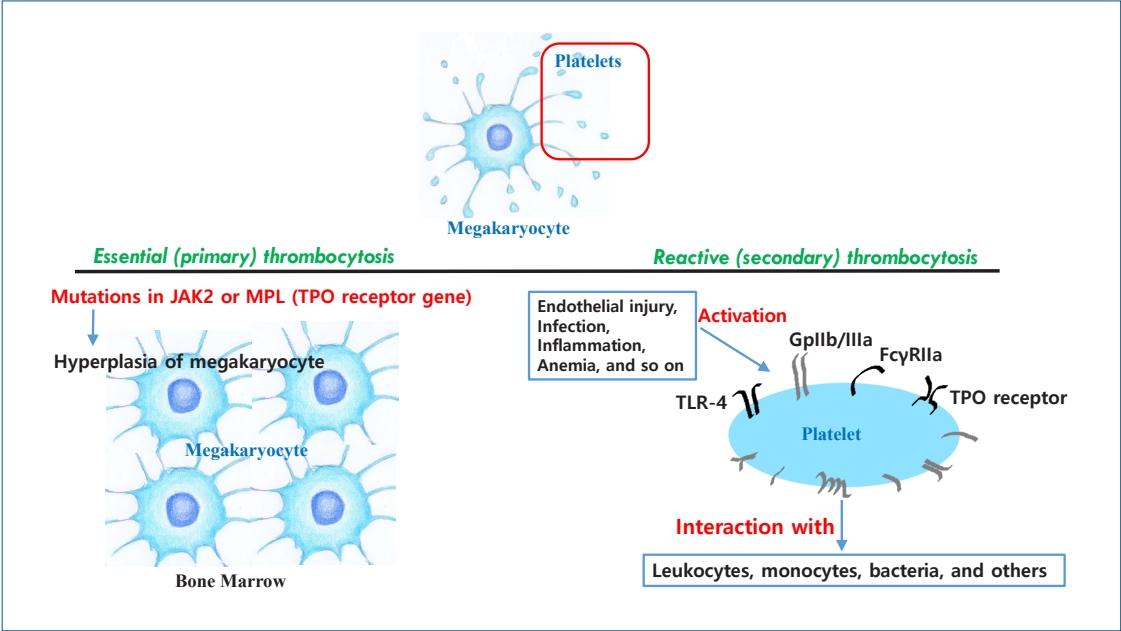
· Thrombocytosis, common in newborns and infants (<2 years) (3%–13%), is caused by elevated thrombopoietin (TPO) concentrations.
· Serum TPO levels are significantly higher immediately to 1 month postnatal and decrease with age.
· Platelet counts are positively correlated with gestational age at birth and postnatal age.
· Thrombocytosis is more common in preterm than in term infants.
· Thrombocytosis in newborns is reactive and resolves spontaneously without complications.
- Endocrinology
- Genetic factors in precocious puberty
- Young Suk Shim, Hae Sang Lee, Jin Soon Hwang
- Clin Exp Pediatr. 2022;65(4):172-181. Published online October 18, 2021
-
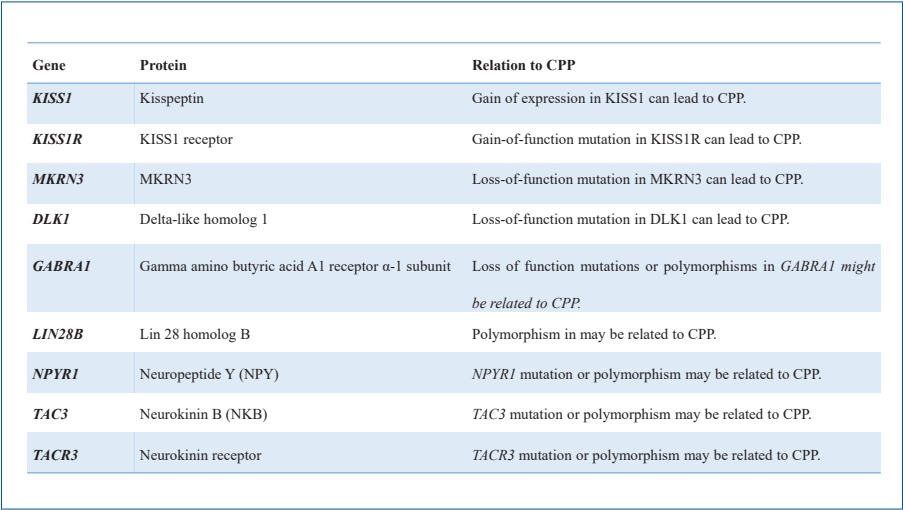
· Mutations in the kisspeptin (KISS1), kisspeptin receptor (KISS1R), makorin ring finger protein 3 (MKRN3), and delta-like homolog 1 (DLK1) genes are associated with idiopathic central precocious puberty (ICPP).
· A few genes related to pubertal onset have been implicated in ICPP.
· Epigenetic factors such as DNA methylation, histone posttranslational modifications, and noncoding ribonucleic acids may be related to ICPP
- Neonatology (Perinatology)
- Retinopathy of prematurity: a review of epidemiology and current treatment strategies
- Eun Hee Hong, Yong Un Shin, Heeyoon Cho
- Clin Exp Pediatr. 2022;65(3):115-126. Published online October 12, 2021
-
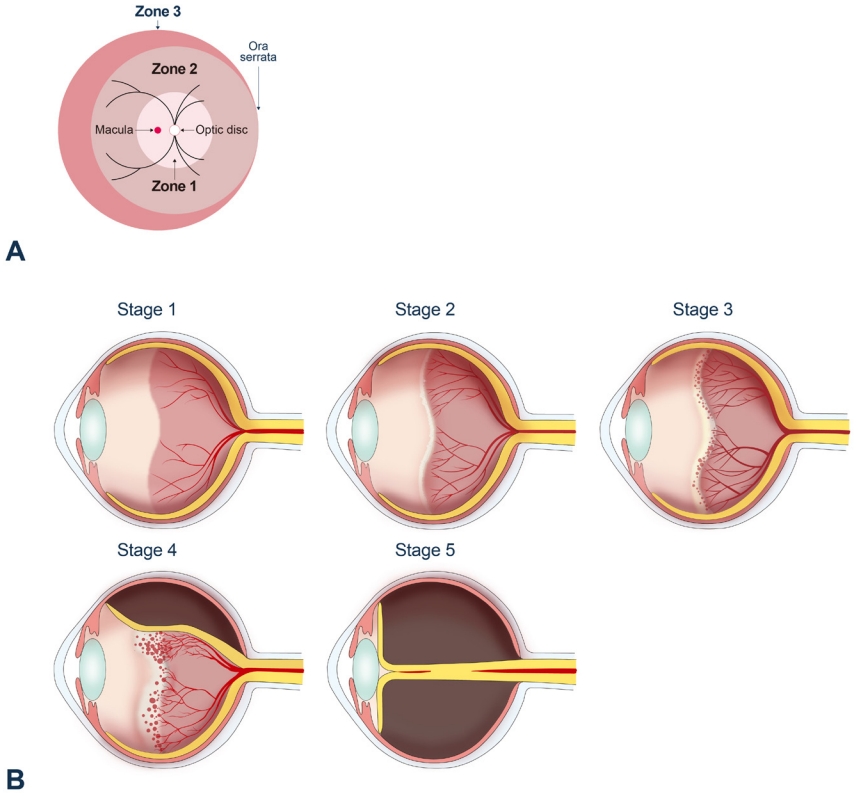
There have been global tri-phasic epidemic periods of retinopathy of prematurity (ROP). In recent years, its incidence has reportedly been 10%–40% depending on country and study population. Current treatment strategies for ROP include laser photocoagulation, surgical treatment, and anti-vascular endothelial growth factor treatment, the role of which has drawn attention in recent years.
- Neurology
- Worldwide national intervention of developmental screening programs in infant and early childhood
- Seunghyo Kim
- Clin Exp Pediatr. 2022;65(1):10-20. Published online September 30, 2021
-

∙ Prevalence rate of developmental disabilities has been reported from 8% to 15% and its rate is increasing worldwide.
∙ The critical period of intervention for developmental delay is before the child reaches 3 years of age.
∙ All primary care pediatricians should conduct developmental surveillance and screening tests to infants and children at scheduled visits. Through this, they are liable for providing early identification and timely intervention.
- Original Article
- Neonatology (Perinatology)
- Is fetal nuchal cord associated with autism spectrum disorder? A meta-analysis
- Ensiyeh Jenabi, Maryam Ahmadi, Azam Maleki
- Clin Exp Pediatr. 2022;65(3):131-135. Published online September 24, 2021
-
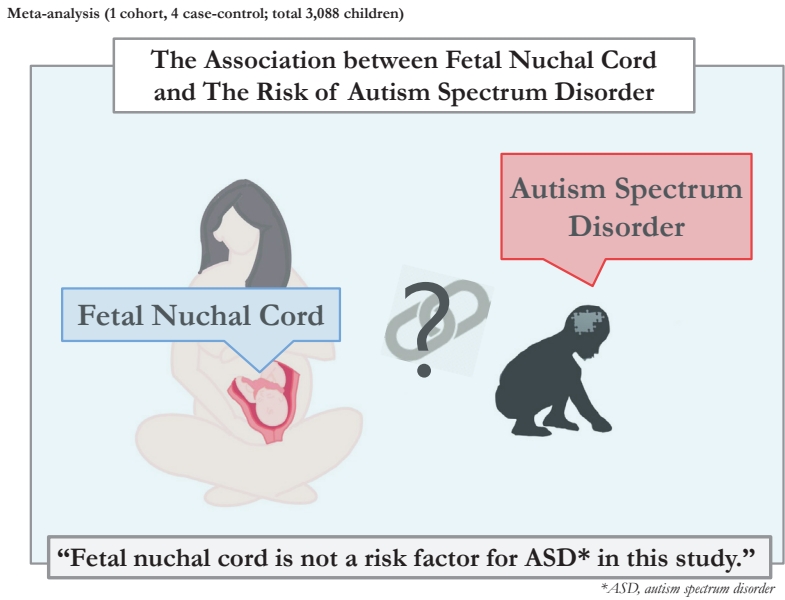
Question: Is fetal nuchal cord a risk factor for autism spectrum disorder (ASD)?
Finding: Five articles (1 cohort, 4 case-control; total 3,088 children) were included in the present meta-analysis. Fetal nuchal cord was not a risk factor for ASD (odds ratio, 1.11; 95% confidence interval, 0.66–1.57). There was homogeneity among studies that reported a risk of ASD (I2=0.0).
Meaning: Fetal nuchal cord is not a risk factor for ASD.
- Review Article
- Infection
- Changes in age-specific seroprevalence of Japanese encephalitis virus and impact of Japanese encephalitis vaccine in Korea
- Byung Ok Kwak, Young Jin Hong, Dong Hyun Kim
- Clin Exp Pediatr. 2022;65(3):108-114. Published online September 24, 2021
-

Since the introduction of a universal Japanese encephalitis (JE) vaccination program and urbanization, the incidence of JE has dramatically decreased in Korea. However, recent JE cases have occurred, predominantly among unvaccinated adults and with a shift in age distribution. Continuous surveillance of the seroprevalence of JE is required to establish a proper immunization policy in Korea.
- Nephrology (Genitourinary)
- Blood pressure measurements and hypertension in infants, children, and adolescents: from the postmercury to mobile devices
- Seon Hee Lim, Seong Heon Kim
- Clin Exp Pediatr. 2022;65(2):73-80. Published online September 15, 2021
-

· Hypertension is defined as a blood pressure (BP) >90th (elevated) or 95th (hypertension) percentile in children by height, age, and sex and >95th percentile in neonates by age, birth weight, and sex.
· Although the oscillometric method can be used for screenings, the auscultatory method remains the gold standard. The hybrid method employs the auscultatory and electronic methods and can reduce bias.
· BP measurement mobile device applications have a potential for development.
- Gastroenterology
- Upper gastrointestinal tract involvement of Crohn disease: clinical implications in children and adolescents
- Eun Sil Kim, Mi Jin Kim
- Clin Exp Pediatr. 2022;65(1):21-28. Published online September 10, 2021
-

· Clinical manifestations of upper gastrointestinal (UGI) tract involvement in Crohn's disease (CD) are common but often clinically underestimated.
· Diagnosing CD by confirming inflammation of the UGI tract histologically is challenging because macroscopic and microscopic findings overlap with those of other diseases.
· Ongoing efforts are needed to enable a standardized assessment of UGI CD in the future.
- Neurology
- Promising candidate cerebrospinal fluid biomarkers of seizure disorder, infection, inflammation, tumor, and traumatic brain injury in pediatric patients
- Seh Hyun Kim, Soo Ahn Chae
- Clin Exp Pediatr. 2022;65(2):56-64. Published online August 23, 2021
-

· Pediatric cerebrospinal fluid (CSF) components have been extensively evaluated as biomarkers of various neurologic diseases.
· Several promising candidate CSF biomarkers, including Tau, glial fibrillary acidic protein, neuron-specific enolase, S100β, and interleukins, have been studied in pediatric patients with seizure disorders, central nervous system infections, inflammation, tumors, hypoxic-ischemic encephalopathy, traumatic brain injuries, intraventricular hemorrhage, and congenital hydrocephalus.
· Circulating microRNAs in the CSF are a promising class of biomarkers for various neurological diseases.
- Original Article
- Other
- Clinical spectrum and short-term outcomes of multisystem inflammatory syndrome in children in a south Indian hospital
- Muruganantham Balagurunathan, Thrilok Natarajan, Jothilakshmi Karthikeyan, Venkateshwaran Palanisamy
- Clin Exp Pediatr. 2021;64(10):531-537. Published online August 4, 2021
-

Question: What are the clinical spectrum, course, and short-term outcomes of multisystem inflammatory syndrome in children (MIS-C)?
Finding: MIS-C can have variable clinical manifestations. Fever is most common, followed by gastrointestinal and cardiovascular symptoms. Early identification and appropriate management lead to favorable outcomes.
Meaning: MIS-C can present in a myriad of ways and severities. High suspicion is necessary to ensure its early identification and appropriate management and favorable patient outcomes.
- Neonatology (Perinatology)
- Comparison of minimally invasive surfactant therapy with intubation surfactant administration and extubation for treating preterm infants with respiratory distress syndrome: a randomized clinical trial
- Mohammad Kazem Sabzehei, Behnaz Basiri, Maryam Shokouhi, Sajad Ghahremani, Ali Moradi
- Clin Exp Pediatr. 2022;65(4):188-193. Published online July 28, 2021
-

Question: Are the short-term outcomes of minimally invasive surfactant therapy (MIST) relatively superior to those of INtubation, SURfactant administration, and Extubation (INSURE) in preterm infants with respiratory distress syndrome (RDS)?
Finding: MIST could be an appropriate substitution for INSURE in preterm infants with RDS since it reduced hospitalization time and number of side effects.
Meaning: MIST is recommended for surfactant administration for its proven advantages over the INSURE technique.
- Review Article
- Neonatology (Perinatology)
- Growth patterns of preterm infants in Korea
- Joohee Lim, So Jin Yoon, Soon Min Lee
- Clin Exp Pediatr. 2022;65(1):1-9. Published online July 8, 2021
-
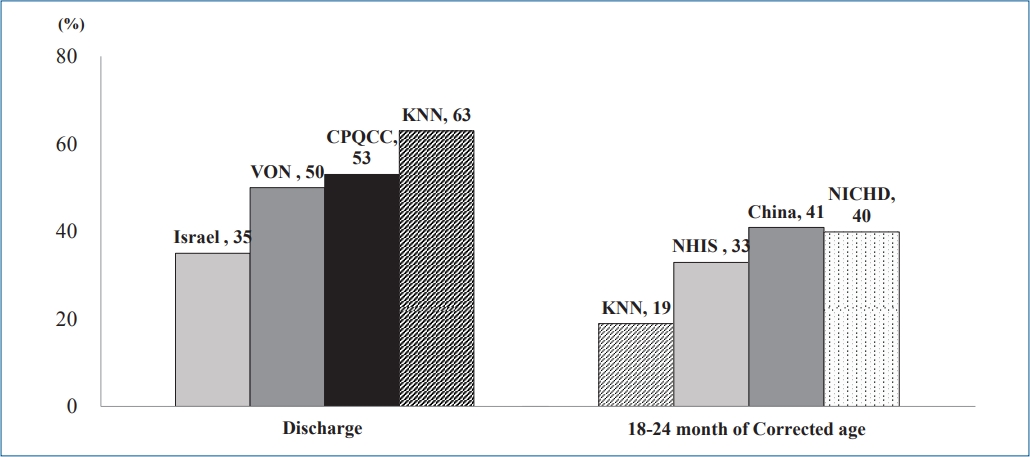
∙ The growth of preterm infants is a main focus of neonatology.
∙ Preterm infants in Korea, especially those with a very low birth weight, achieve retarded growth.
∙ Careful growth monitoring and early intervention will contribute to better development outcomes and quality of life for preterm infants and improve public health.
- Hematology
- Thrombosis and severe acute respiratory syndrome coronavirus 2 vaccines: vaccine-induced immune thrombotic thrombocytopenia
- Young Shil Park
- Clin Exp Pediatr. 2021;64(8):400-405. Published online June 30, 2021
-

· Thrombosis and thrombocytopenia occurring within 4–28 days after severe acute respiratory syndrome coronavirus 2 vaccination require attention.
· The terms vaccine-induced immune thrombotic thrombocytopenia (VITT) and thrombosis with thrombocytopenia syndrome (TTS) are used.
· VITT is pathogenetically similar to heparin-induced thrombocytopenia.
· VITT/TTS could be associated with the development of platelet-activating anti-platelet factor 4 antibodies.
· For suspected VITT/TTS, early treatment decisions (intravenous immunoglobulin, non-heparin anticoagulant, and avoidance of platelet transfusions) are important.
- Original Article
- General Pediatrics
- Gross motor dysfunction and balance impairments in children and adolescents with Down syndrome: a systematic review
- Preyal D. Jain, Akshatha Nayak, Shreekanth D. Karnad, Kaiorisa N. Doctor
- Clin Exp Pediatr. 2022;65(3):142-149. Published online June 11, 2021
-
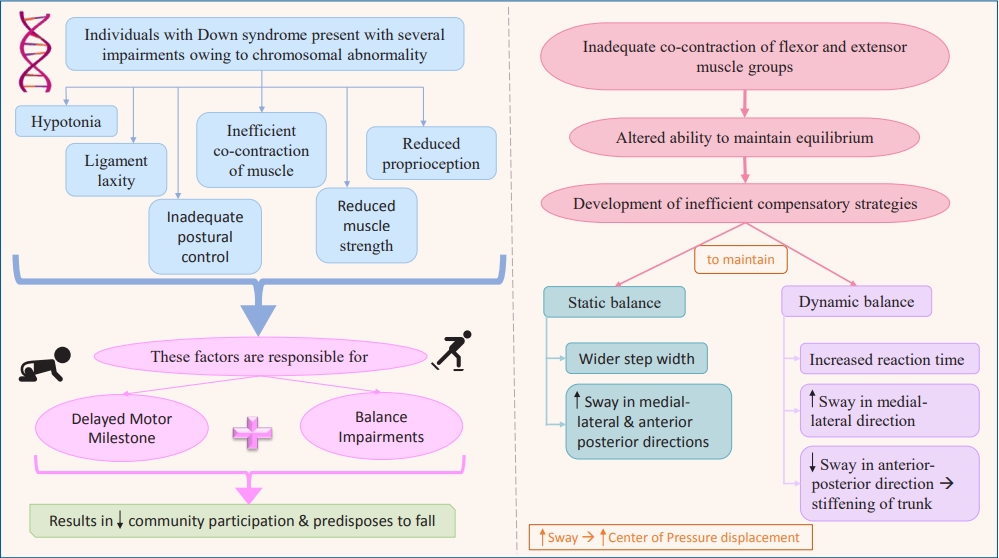
Question: What are the primary motor and balance dysfunctions in children with Down syndrome?
Finding: These individuals have gross delays, altered balance, and inefficient compensatory mechanisms.
Meaning: Neuromuscular and musculoskeletal impairments due to the chromosomal abnormality lead to developmental delay. These children also exhibit poor balance with greater instability and inefficient compensatory mechanisms including altered center of pressure displacement and trunk stiffening that predisposes them to falls.
- Review Article
- Infection
- Recommendation for use of diphtheria and tetanus toxoids and acellular pertussis, inactivated poliovirus, Haemophilus influenzae type b conjugate, and hepatitis B vaccine in infants
- Hye-Kyung Cho, Su Eun Park, Yae-Jean Kim, Dae Sun Jo, Yun-Kyung Kim, Byung-Wook Eun, Taek-Jin Lee, Jina Lee, Hyunju Lee, Ki Hwan Kim, Eun Young Cho, Jong Gyun Ahn, Eun Hwa Choi; The Committee on Infectious Diseases of the Korean Pediatric Society
- Clin Exp Pediatr. 2021;64(12):602-607. Published online June 8, 2021
-
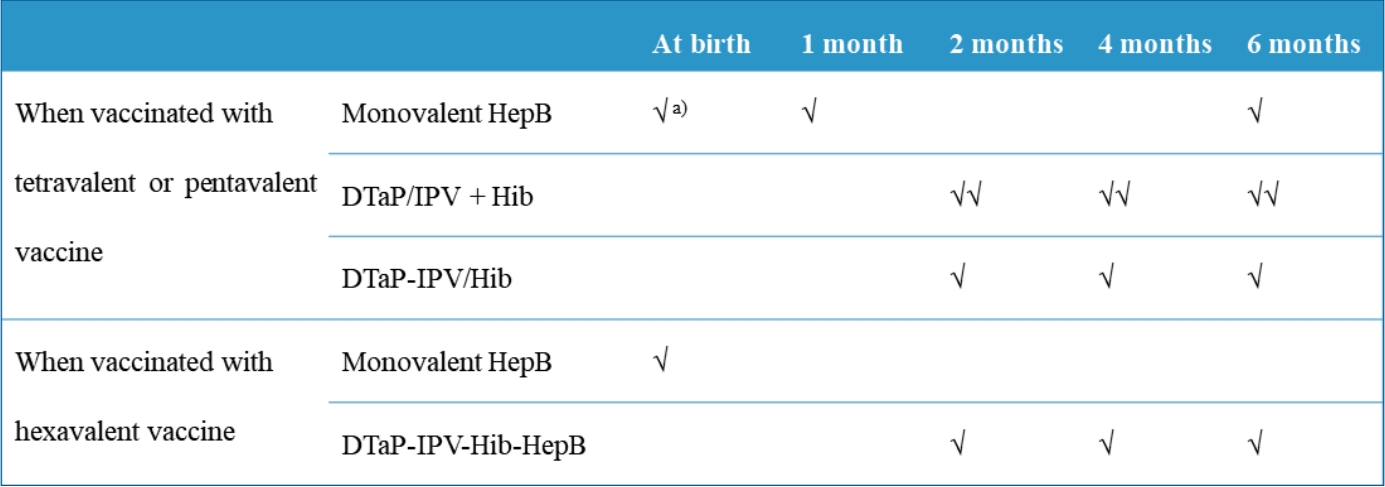
∙ Diphtheria and tetanus toxoids and acellular pertussis-inactivated poliovirus-Haemophilus influenzae type b-hepatitis B (DTaP-IPV-Hib-HepB) was licensed in Korea in April 2020.
∙ DTaP-IPV-Hib-HepB is indicated as a 3-dose primary series for infants aged 2, 4, and 6 months who received the standalone HepB vaccine at birth.
∙ Infants born to HepB surface antigen-positive mothers are currently recommended to be immunized with HepB immunoglobulin at birth and then monovalent HepB vaccine at 0, 1, and 6 months.
- Original Article
- Cardiology
- Vasovagal syncope with mild versus moderate autonomic dysfunction: a 13-year single-center experience
- Han Eoul Lee, Dong Won Lee
- Clin Exp Pediatr. 2022;65(1):47-52. Published online June 1, 2021
-
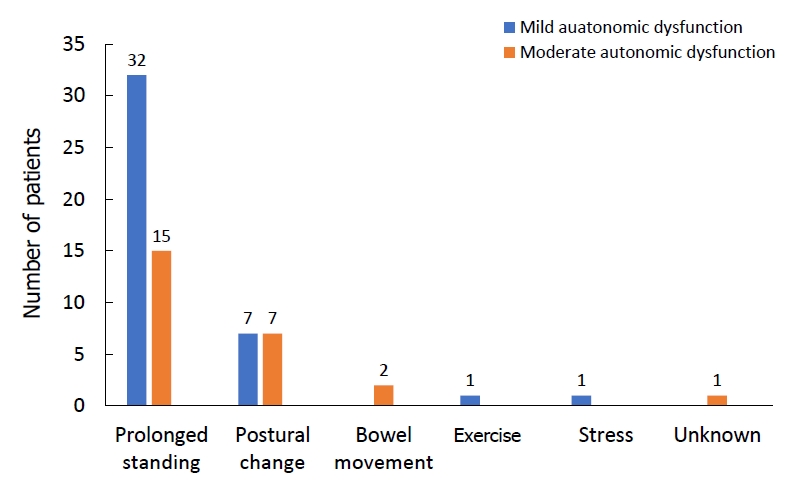
Question: It is well known that autonomic dysfunction contributes to vasovagal syncope (VVS). Does the degree of autonomic dysfunction contribute to clinical manifestations, diagnostic methods, treatment, and prognosis?
Finding: The clinical manifestations, diagnostic methods, treatment, and prognosis differ between patients with mild and moderate degrees of autonomic dysfunction.
Meaning: VVS is caused by autonomic dysfunction, but autonomic dysfunction severity need not be classified.
- Review Article
- Oncology
- Update on infantile hemangioma
- Hye Lim Jung
- Clin Exp Pediatr. 2021;64(11):559-572. Published online May 26, 2021
-

· Infantile hemangiomas (IHs) are the most common benign vascular tumors, occurring in 5%–10% of infants.
· IHs are characteristically not present at birth but are usually diagnosed at 1–4 weeks of age, rapidly proliferate until 5 months of age, and then spontaneously involute.
· High-risk IHs (10%) require early treatment from 1 month of age.
· Oral propranolol, a nonselective beta-blocker, is the first-line treatment for IHs.
- Original Article
- Pulmonology
- Modified high-flow nasal cannula for children with respiratory distress
- Sarocha Itdhiamornkulchai, Aroonwan Preutthipan, Jarin Vaewpanich, Nattachai Anantasit
- Clin Exp Pediatr. 2022;65(3):136-141. Published online May 24, 2021
-
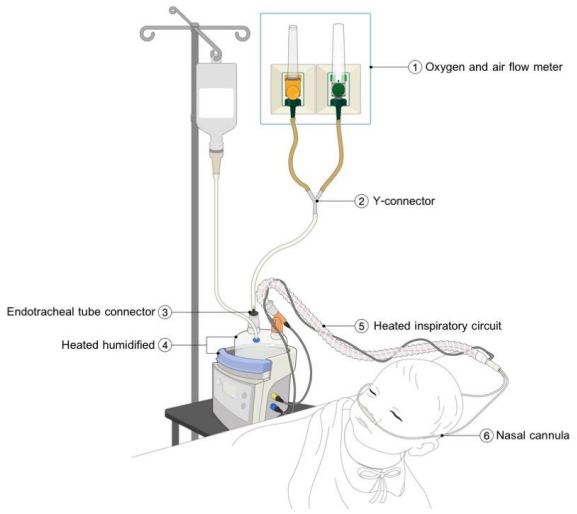
Question: Can the modified high-flow nasal cannula (HFNC) provide alternative respiratory support for children with acute respiratory distress?
Finding: A total of 74 patients were assigned to the modified or commercial HFNC groups. The intubation rate, length of hospital stay, and adverse events did not differ between the 2 groups.
Meaning: The modified HFNC can provide alternative respiratory support for pediatric respiratory distress.
- Review Article
- Neurology
- Cognitive outcomes in late childhood and adolescence of neonatal hypoxic-ischemic encephalopathy
- Bo Lyun Lee, Hannah C. Glass
- Clin Exp Pediatr. 2021;64(12):608-618. Published online May 24, 2021
-
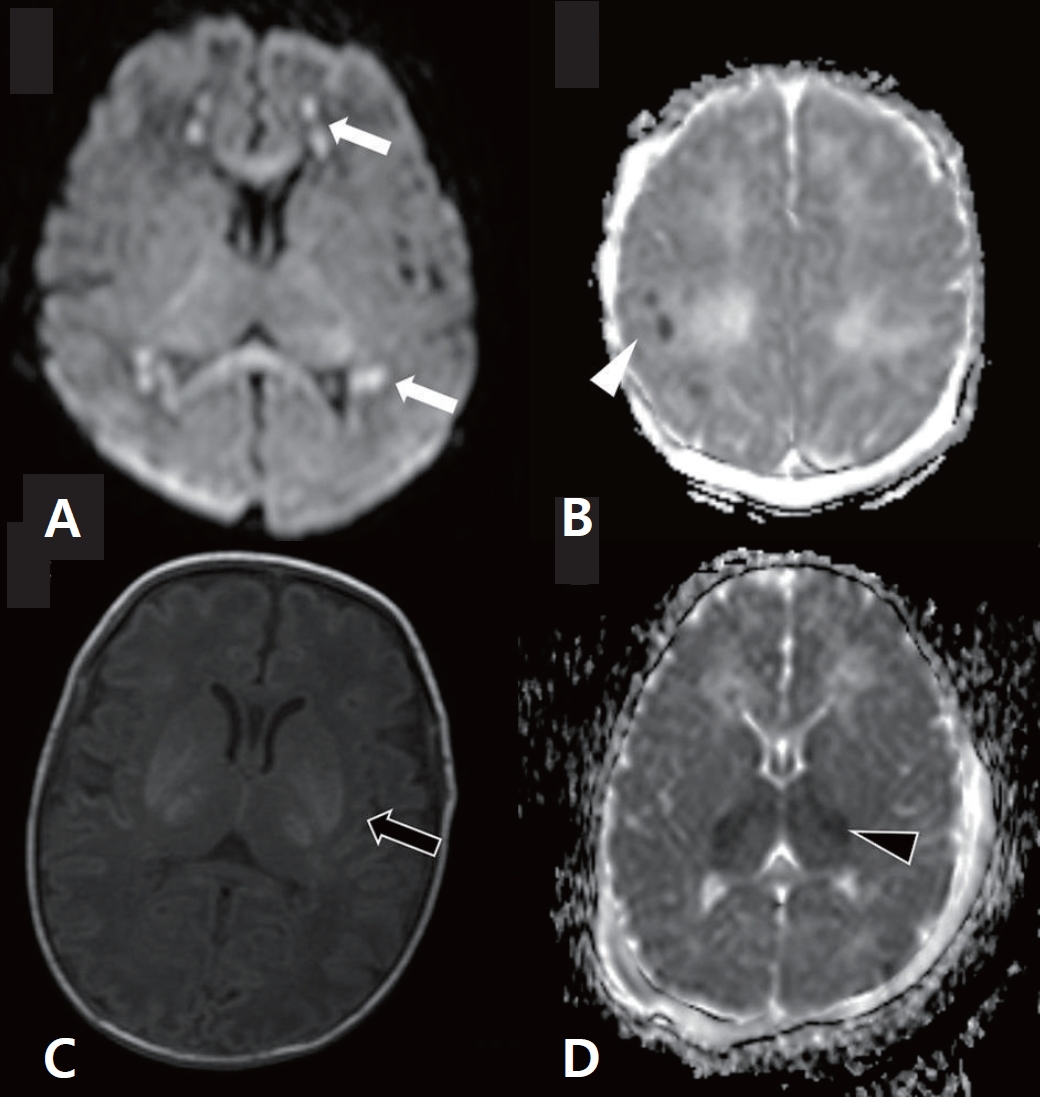
∙ Cognitive impairments occur in children with hypoxic-ischemic encephalopathy (HIE) even without neuromotor deficits.
∙ Therapeutic hypothermia has improved neurodevelopmental outcomes of children with HIE; however, 40% of children remain at risk of death/disability or cognitive impairments necessitating the development of adjunctive neuroprotective therapies.
∙ Long-term follow-up until adolescence is required to identify cognitive dysfunction.
∙ A pattern of watershed injury on brain imaging is associated with poor cognitive outcomes.
- Nutrition
- Changes in health status of North Korean children and emerging health challenges of North Korean refugee children
- Seong-Woo Choi
- Clin Exp Pediatr. 2021;64(11):552-558. Published online May 17, 2021
-

· Among North Korean refugee (NKR) children under 5 years, 61% and 9.3% were underweight in 1998 and 2017, respectively.
· The immunization rate of NKR children exceeded 90% since 2006.
· For NKR children, protein-energy malnutrition was the #1 cause of death in 2009 versus #17 in 2019.
· In 2020, stunting affected 5.4% and 0.9% and obesity affected 10.7% and 2.7% of NKR versus South Korean children, respectively.
- Original Article
- Endocrinology
- Association between polycystic ovary syndrome and risk of attention-deficit/hyperactivity disorder in offspring: a meta-analysis
- Azam Maleki, Saeid Bashirian, Ali Reza Soltanian, Ensiyeh Jenabi, Abdollah Farhadinasab
- Clin Exp Pediatr. 2022;65(2):85-89. Published online April 15, 2021
-
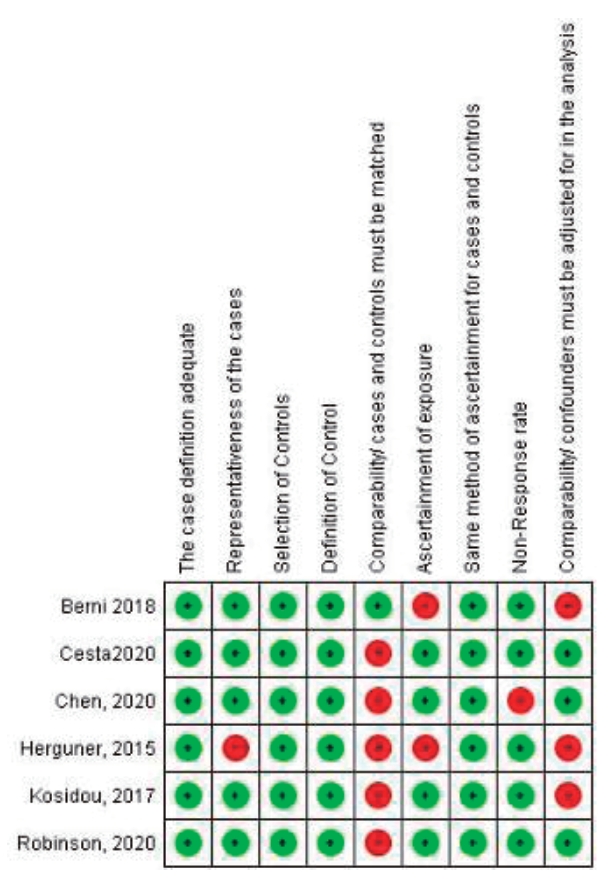
Question: Have polycystic ovary syndrome (PCOS) increased risk of having an offspring with attention-deficit/hyperactivity disorder (ADHD)?
Finding: Six articles (3 cohort and 3 case-control studies; 401,413 total ADHD cases) met the study criteria. Maternal PCOS was associated with an increased risk of ADHD in the offspring based on odds ratio (OR) and relative ratio (RR) (OR, 1.42; 95% confidence interval [CI], 1.27–1.57) and (RR, 1.43; 95% CI, 1.35–1.51), respectively.
Meaning: Our study showed that maternal PCOS is a risk factor for ADHD.
- Review Article
- Infection
- Effects of nasopharyngeal microbiota in respiratory infections and allergies
- Hyun Mi Kang, Jin Han Kang
- Clin Exp Pediatr. 2021;64(11):543-551. Published online April 15, 2021
-

· The nasal microbiota varies with age and is shaped by various factors in healthy individuals.
· The pathological condition of the respiratory tract appears to be associated with reduced nasal microbiota biodiversity, while dysbiosis is involved in the pathophysiology of many respiratory diseases, including otitis, sinusitis, allergic diseases, and lower respiratory infections.
- Original Article
- General Pediatrics
- Efficacy of probiotics for managing infantile colic due to their anti-inflammatory properties: a meta-analysis and systematic review
- Reza Shirazinia, Ali Akbar Golabchifar, Mohammad Reza Fazeli
- Clin Exp Pediatr. 2021;64(12):642-651. Published online April 12, 2021
-
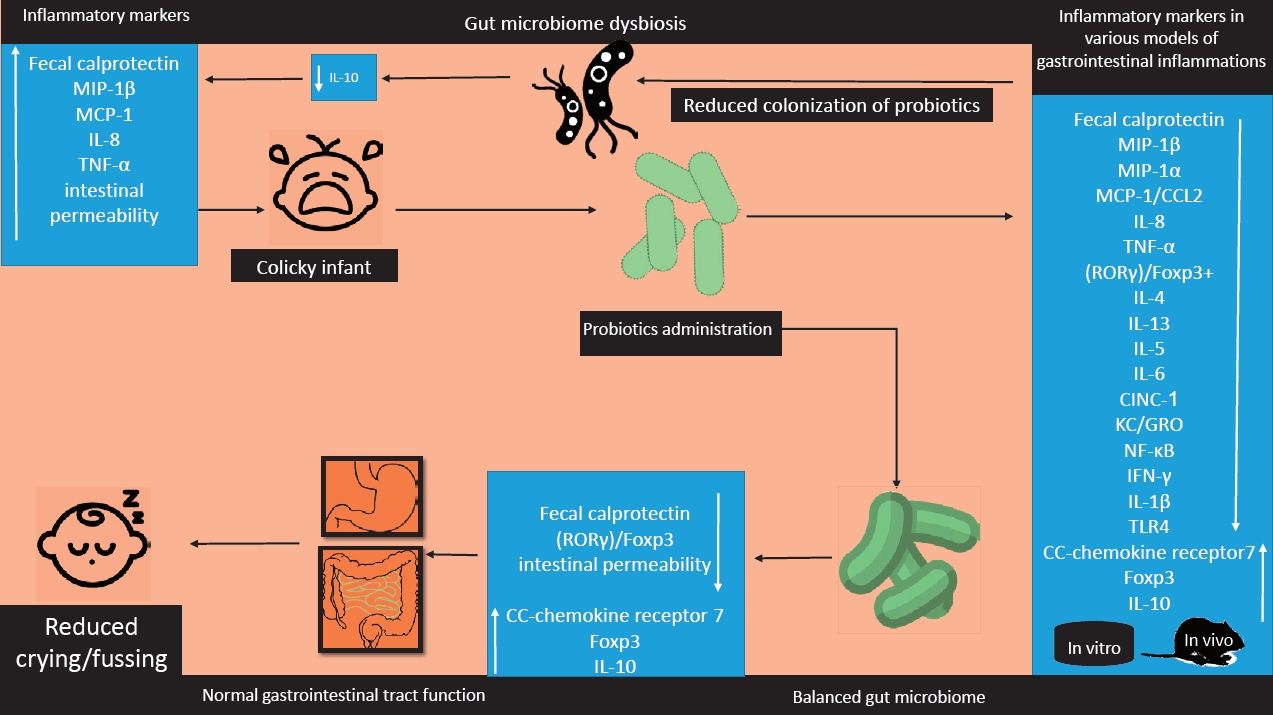
Question: Do probiotics reduce colic symptoms?
Finding: Probiotics reduced colic symptoms in colicky infants probably due to the anti-inflammatory properties.
Meaning: Probiotics may be an effective and less noxious way to manage infantile colic.
- Review Article
- Nephrology (Genitourinary)
- Obesity and chronic kidney disease: prevalence, mechanism, and management
- Hyung Eun Yim, Kee Hwan Yoo
- Clin Exp Pediatr. 2021;64(10):511-518. Published online April 6, 2021
-
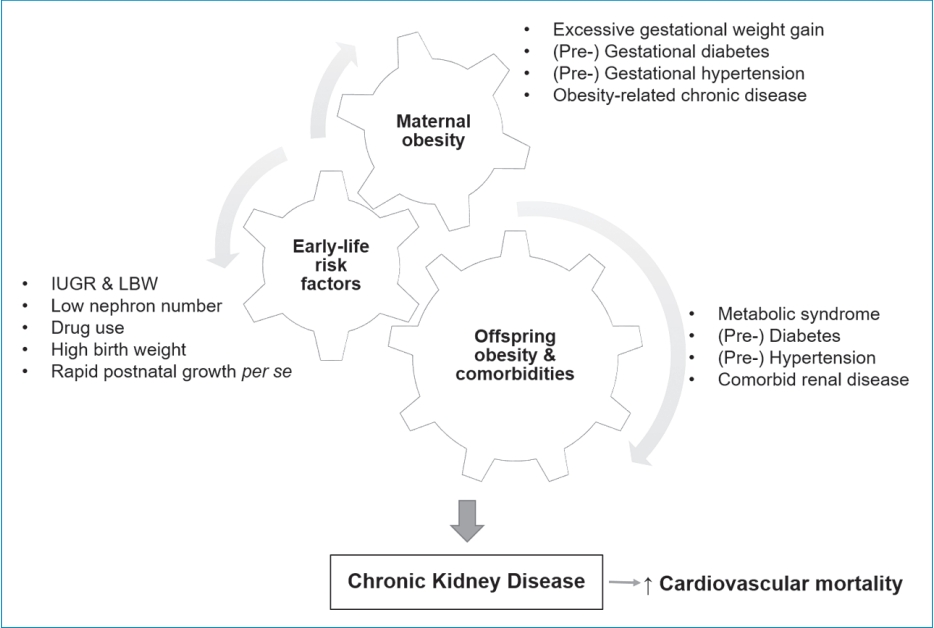
· Obesity is strongly associated with the development and progression of chronic kidney disease.
· Altered renal hemodynamics, metabolic effects, and lipid nephrotoxicity may play a key role in the development of obesity-related kidney disease.
· Children born to obese mothers are at increased risk of developing obesity and chronic kidney disease later in life.
· A multilevel approach is needed to prevent obesity and related chronic diseases.
- Original Article
- General Pediatrics
- Global relationship between parent and child obesity: a systematic review and meta-analysis
- Ju Suk Lee, Mi Hyeon Jin, Hae Jeong Lee
- Clin Exp Pediatr. 2022;65(1):35-46. Published online March 29, 2021
-

Question: Are parent and child obesity correlated worldwide?
Finding: Overweight and obese status of parents and children were significantly associated worldwide. The association between parent and child obesity was stronger in Asia than in Europe and the Middle East, and in high-income than in middle- and low-income countries.
Meaning: Childhood obesity is highly influenced by parental weight status, indicating that parents could play an important role in its prevention.
- Review Article
- Immunology
- Modern diagnostic capabilities of neonatal screening for primary immunodeficiencies in newborns
- Evgenia Olegovna Khalturina, Natalia Dmitrievna Degtyareva, Anastasiia Vasi’evna Bairashevskaia, Alena Valerievna Mulenkova, Anna Vladimirovna Degtyareva
- Clin Exp Pediatr. 2021;64(10):504-510. Published online March 25, 2021
-
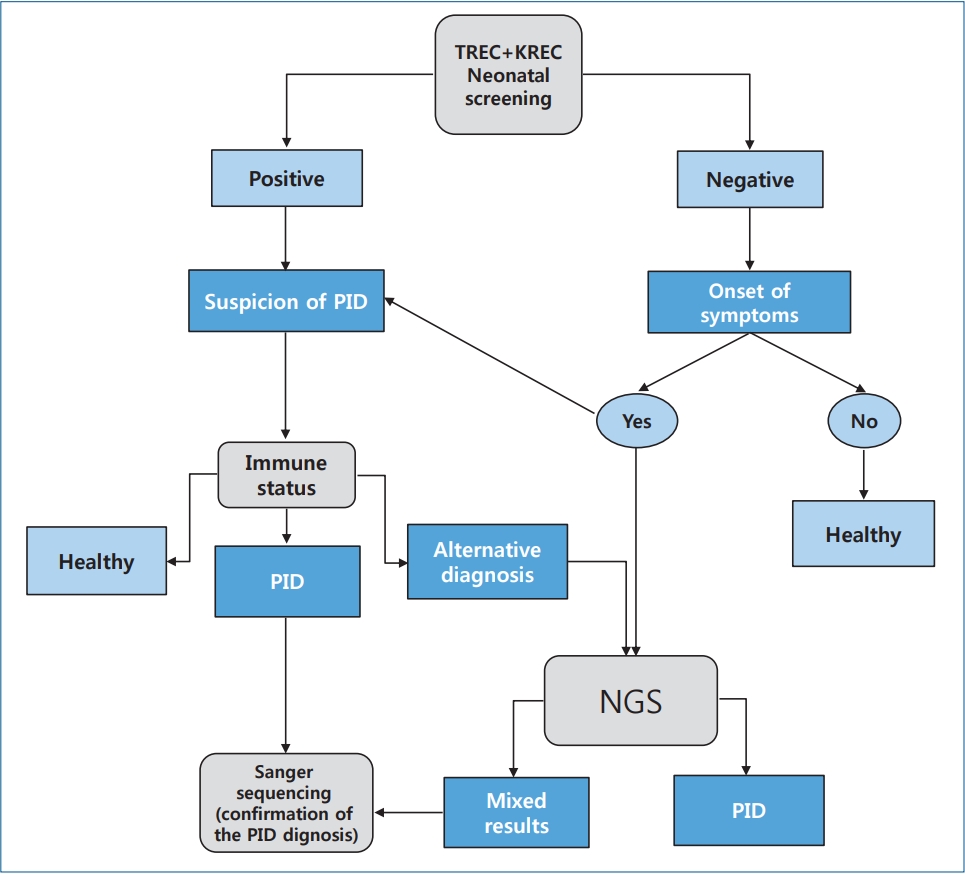
· Neonatal screening for primary immunodeficiency diseases (PIDs) enables early diagnosis and subsequent initiation of therapy.
· Excision of T-cell receptors and kappa-recombination excision circles are cheaper alternative PID screening methods.
· Sanger DNA sequencing remains the reference method for detecting PID; however, next-generation sequencing technology is increasingly used to diagnose it.
· Here we developed a graphical algorithm for diagnosing primary immunodeficiency syndrome based on modern methods of screening for primary immunodeficiencies in newborns.
- Original Article
- Other
- Spatial modeling of mortality from acute lower respiratory infections in children under 5 years of age in 2000–2017: a global study
- Ali Almasi, Sohyla Reshadat, Alireza Zangeneh, Mehdi Khezeli, Raziyeh Teimouri, Samira Rahimi Naderi, Shahram Saeidi
- Clin Exp Pediatr. 2021;64(12):632-641. Published online March 19, 2021
-

Question: We assessed the spatial modeling of mortality from acute lower respiratory infections in children under 5 years old during 2000–2017 using a global data.
Finding: The total number of child deaths during the study period decreased, while the number of hot spots increased among countries.
Meaning: Hot spots were concentrated in Asia in 2000 but shifted toward African countries by 2017. A cold spot formed in Europe over the study period.
- General Pediatrics
- Risk factors for childhood pneumonia: a case-control study in a high prevalence area in Indonesia
- Vivi Ninda Sutriana, Mei Neni Sitaresmi, Abdul Wahab
- Clin Exp Pediatr. 2021;64(11):588-595. Published online March 15, 2021
-
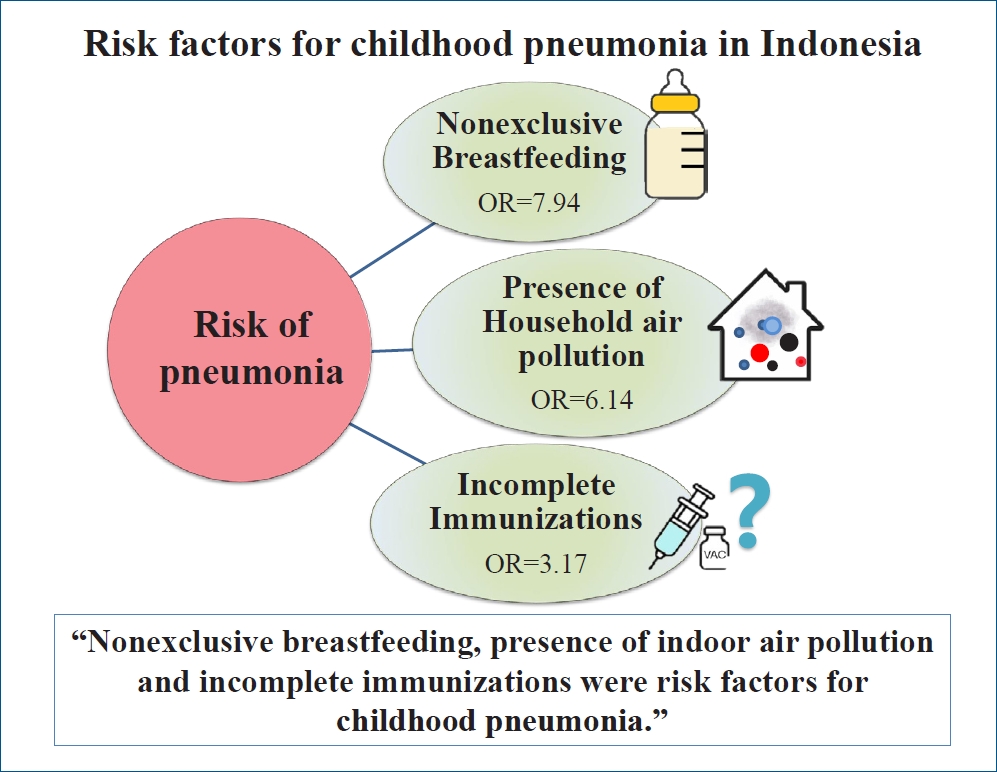
Question: Is the incidence of childhood pneumonia influenced by breastfeeding and basic immunization status?
Finding: Exclusive breastfeeding and complete basic immunization status have an effect in limiting the incidence of childhood pneumonia.
Meaning: While exclusive breastfeeding and complete basic immunization the Expanded Program on Immunization status are important factors for reducing the incidence of childhood pneumonia, indoor air pollution was also a significant risk factor.
-

-
-
Impact Factor3.2
-
8.02023CiteScore94th percentilePowered by
-









